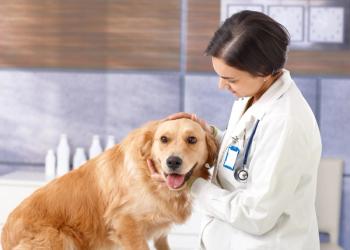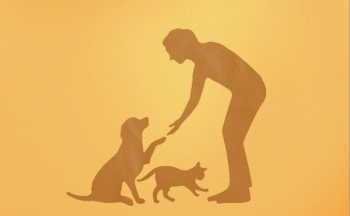
Chemotherapy safety: Why, when, and how (Proceedings)
Chemotherapy safety can be broken down into two big categories: safety for the patient, and safety for the individuals handling the drugs. Understanding how chemotherapy works provides a background for knowing potential dangers of treatments as well as how to safely use these beneficial drugs.
Chemotherapy safety can be broken down into two big categories: safety for the patient, and safety for the individuals handling the drugs. Understanding how chemotherapy works provides a background for knowing potential dangers of treatments as well as how to safely use these beneficial drugs.
General principles of chemotherapy
Chemotherapy damages (and in some cases kills) cells that are growing and dividing rapidly. The extent of damage is determined by the dose of drug and the length of time that the cells are exposed to the drug (efficacy = dosage x time). Cancer patients have 3 main populations of cells that may be affected by chemotherapy.
1. Tumor cells: Genetic instability and rapid growth of tumors create an inherent sensitivity to chemotherapy-induced DNA damage. Rapidly dividing cells are more likely to be damaged by chemotherapy than quiescent cells, but this depends upon the mechanism of action of each specific chemotherapeutic.
2. Intestinal epithelial cells: It takes 3-5 days for the intestinal epithelial cells lining the crypts to mature and migrate up to the villi tips. Chemotherapy-induced damage to these cells takes 3 to 5 days to manifest.
3. Bone marrow: Cells with the shortest half-life (neutrophils and platelets) are of most concern. Nadirs (the low point in the cell count) most often occur at 7 days post-therapy.
Patient safety
Chemotherapy toxicities are categorized as general or specific. General side effects can occur with any chemotherapy drug. They occur in rapidly dividing normal tissues. Most chemotherapy protocols used in veterinary medicine have < 5% incidence of severe side effects. Most side effects are self-limiting and will resolve with minimal vet intervention.
General side effects that may be seen
GI toxicity
There are 2 mechanisms by which this can occur, in either situation it is manifested as inappetance, nausea, vomiting, and/or diarrhea.
1. Direct damage to intestinal epithelial cells. Onset is 3 to 5 days after therapy, paralleling the time it would take for cells to migrate out of the crypts and onto the villi.
2. Triggering of the chemoreceptor trigger zone, either directly (onset immediate or w/i 24 hrs) or through stimulation of gut vagal efferents (from GI damage).
If the patient has a history of chemotherapy induced emesis, use antiemetics (metoclopramide, odansatron, etc.) prior to and following drug administration.
Anti-emetics to love
Only about 1 in 5 dogs on the multidrug chemotherapy protocol for lymphoma will have a side effect, and most of these are mild and can be managed at home. However, if multiple episodes of vomiting occur in a 12-24 hour period despite withholding food and water, or if the patient is uncomfortable and repeatedly vomiting in a short span of time without resting, an anti-emetic is indicated. As most patients do not end up ill with chemotherapy, it is usually not necessary to send an owner with an anti-emetic after every dose of drug. However, if a patient has a bad reaction to a treatment, an anti-emetic can be started immediately after subsequent doses. Also, if the GI reaction is severe, the drug dose can be decreased by 20%. If very severe, substitution of a different drug in the same category can be considered. Other causes for vomiting from chemotherapy include direct triggering of the chemoreceptor trigger zone in the brain, and stimulation of the afferent nerves leading from the GI tract to the brain. These types of reactions are noted much more rapidly, usually during chemotherapy administration, and are rarely seen with most drugs that are commonly used (cisplatin being the classic drug for this cause of vomiting).
Metoclopramide (0.3-0.5 mg/kg PO or SQ 2-3 times daily) can be effective when used for several (3-5) days starting immediately after administration of a chemotherapy drug that has previously caused GI upset in a patient.
Maropitant (Cerenia®) (1 mg/kg SQ once daily) is a novel neurokinin-1 receptor antagonist which has been shown to prevent vomiting caused by either central or peripheral pathway stimulation in dogs. In this study, metoclopramide (0.5 mg/kg SQ) and chlorpromazine (0.5 mg/kg SQ) only helped with centrally-induced emesis, and ondansetron (0.5 mg/kg IV) only with peripherally-induced emesis. In another study, a single daily dose of maropitant (1 mg/kg SQ) was more effective than metoclopramide 2-3 times daily for treating vomiting from a number of causes in dogs. The label directions state that maropitant should be given for only 3 consecutive days. Cats can safely receive maropitant at the same dose.
When IV fluids?
Most patients with GI upset can be managed conservatively at home, as discussed above. However, there are times when a patient needs to be supported with fluids. Subcutaneous fluids can be considered in small dogs and cats that are stable, afebrile, and not severely affected. Large dogs, clinically dehydrated patients, patients with a fever, or patients that are weak, slow, or otherwise systemically appearing very ill, need to receive IV fluids. In patients with significant GI toxicity, bacterial translocation from the gut into the bloodstream will increase, increasing the risk of sepsis. This risk is worsened in cases of concurrent myelosuppression. These patients will benefit from IV fluids and IV antibiotics. That said, the risk of developing a nosocomial infection in a myelosuppressed patient is a real one, and thus chemotherapy patients are kept in ICU for as little time as possible. Keep in mind that many oncology patients are on prednisone or have other reasons for being polyuric and polydipsic, such as hypercalcemia. Thus, their "maintenance" rate of fluids is often 2-3 times what the standard calculated maintenance dose would be. Adding in the amount of fluids needed to correct dehydration and to keep up with ongoing losses, and these patients may need a high fluid rate. Lastly, do not use a catheter that has been used for IV fluids to administer a vesicant chemotherapy drug. The catheter may not have been perfectly placed, and even if it was a "clean stick", vasculitis around a catheter can develop quickly and lead to leaking of that vessel. It is always safer to place another catheter for chemotherapy administration.
Most newly diagnosed oncology patients that feel overall well on presentation can be treated with chemotherapy and sent home the same day. Occasionally it is recommended to hospitalize the patient on IV fluids for 24-48 hours post-treatment. Dogs with significant hypercalcemia may benefit from sodium chloride diuresis. Also, dogs with very heavy lymphoma tumor burdens may respond very quickly to chemotherapy and develop acute tumor lysis syndrome. This syndrome is characterized by electrolyte disorders and sudden onset of severe weakness; vomiting and diarrhea and coagulation disturbances may also occur. Only limited reports of this syndrome exit; in cases where a clinician may be concerned about its developing, preemptive IV fluids and close monitoring may be of benefit.
Myelosuppression
Myelosuppression occurs secondary to damage to the rapidly dividing stem cells. Cells with the shortest life span and most rapid bone marrow transit are most susceptible, neutrophils and/or platelets are of greatest concern. Nadir typically occurs at 5-7 days after administration.
1. Neutrophils
A. Neutropenia associated with cancer is most often due to chemotherapy treatment. In dogs undergoing chemotherapy, the neutrophil nadir for most drugs is at 1 week post treatment. Neutrophil counts may get quite low in dogs getting chemotherapy, yet sepsis is rarely noted. A CBC with a manual differential is recommended to be performed at the nadir of any chemotherapy drug. If neutrophils are <2000-2500 cells/uL, chemotherapy is delayed 3-7 days (and a CBC is then rechecked). If neutrophils are <1000 cells/uL and the patient is afebrile, oral antibiotics are dispensed and the owner is instructed to check the dog's temperature twice daily for 2-3 days (and a CBC is then rechecked). If, however, the neutrophils are <1000 cells/uL and the patient is febrile, IV antibiotics are needed. Enrofloxacin and ampicillin are a good combination – coverage for both gram negative and gram positive bacteria are critical. A CBC should be rechecked every day. The nadir for most drugs lasts only a day or so, and neutrophil counts may rise dramatically. It is ideal to keep patients that are receiving chemotherapy out of ICU, as nosocomial infections may be a serious concern in this immunosuppressed population.
2. Platelets
A. Treatment should be delayed with a platelet count of <50,000/µl. The one exception to this is if the thrombocytopenia is secondary to the neoplasia (i.e., a paraneoplastic syndrome). In this case, treatment of the cancer is needed to resolve the thrombocytopenia.
Alopecia
Hair loss occurs in dogs with continuously growing haircoats, but it is not a permanent problem. Guard hairs and whiskers may be lost in both dogs and cats. While not life threatening, don't forget to warn owner of this hair loss issue!
Specific side effects of concern
Extravasation of drugs that are vesicants can cause problems from a local chronic wound to a sloughed leg/death of the patient. Of drugs used commonly in first line chemotherapy treatments, vincristine and vinblastine are moderate vesicants; doxorubicin is a severe vesicant. Other drugs also may cause severe reactions – be sure to check this aspect of any new chemotherapy treatment being used. Vesicants need to be given in a catheter that has been cleanly placed on a "first stick" and into a vessel that has not been used for blood draws recently.
Treasure your blood vessels
Preserving peripheral veins for chemotherapy administration is critical for successful patient management. Jugular venipuncture is the standard for any cancer patient. The exception to this rule is patients with coagulopathies or platelet problems. These patients will need to have the venipuncture site wrapped firmly for several hours post-blood draw and thus the neck needs to be avoided.
Median saphenous veins are the hidden treasures of oncologists and oncology nurses. Unlike the lateral saphenous, the medial saphenous is straight and more firmly fixed to surrounding tissues, therefore less likely to roll away. With the medial saphenous veins included, dogs have six peripheral veins available for IV chemotherapy administration. At times, all of these veins will be "stuck" trying to get a perfect placement of a catheter for delivery of a vesicant chemotherapy agent! The medial saphenous in cats is also very useful, as the patient can be restrained in lateral recumbency while scruffed and allow easy access to that vein. Another exception to the jugular blood draw rule is in fractious cats – the medial saphenous can be a great place to get the CBC sample for that visit's treatment. Be sure to wrap the leg afterwards to keep the area from getting a hematoma that may lead to problems in the subsequent weeks, and note which vein was punctured so as to NOT use that vein for that week's treatment, if the drug is a vesicant. In cats, the lateral saphenous veins are very small but can be used with 25g catheters if all other veins have been punctured.
Vascular access ports (VAP), surgically implanted indwelling subcutaneous systems for venous access, can be useful in oncology small animal patients. The ports allow for drug administration as well as blood withdrawl; although small fibrin tags may form at the end of the catheter and lead to an inability to draw out of the port. Generally well-tolerated, complications in one study in dogs with VAPs placed for radiation therapy included seroma formation in 7 (30.4%) dogs, breakage of port-anchoring sutures in 3 (13.0%) dogs, suspected fatal catheter-related septicemia in 1 (4.3%) dog, and temporary partial withdrawal occlusion in 18 of 255 (7.1%) anesthetic episodes. The cost of the VAP varies depending on the provider; Norfolk Vet Products (847-674-7143) offers several sizes which range in cost from $145-165. The main costs associated with VAPs are the costs associated with the surgical placement, which can be costly. Thus, these systems are typically reserved for patients that will be receiving chemotherapy for an extended period of time (i.e. – have a good prognosis and a continuous protocol for the next 6 months or so) and that have peripheral vein issues. Fractious animals, animals with scarred peripheral veins, and exotic animals such as ferrets will be easier to manage with a VAP.
Don't risk extravasations – drugs are your friend
And we're not just talking chemotherapy drugs! Continuing along the lines of what to do with fractious patients, there are times when it is ideal to sedate and/or anesthetize a patient for IV chemotherapy administration. Safety for the patient AND the staff needs to be foremost in importance. An IM or SQ injectable sedative is often ideal, as it will spare veins and also is an easier way to administer drugs in a mean animal. For dogs with a healthy cardiovascular system, the combination of acepromazine (0.02mg/kg) and butorphenol (0.2 mg/kg) IM or SQ works very well. The patients are usually able to still walk with that sedation, but are very sleepy and easy to manage. For heavier sedation, the combination of butorphenol 0.2mg/kg, dexmedetomidine dog: 0.0044mg/kg or cat: 0.01mg/kg, and atropine 0.04 mg/kg: these can be mixed together and all given IM. "Boxing" down a cat with inhalant anesthesia (isofluorane) can work very well and may allow for even less touching of the cat in an awake state (can "pour" the cat from the cat carrier into the boxing tank without direct handling).
Medical Staff Safety
Fractious patients are not the only risk in oncology treatments. While they may be the most obvious, the more subtle and continuous risk of chemotherapy exposure to personnel likely is a more significant health hazard. Safe handling of chemotherapy drugs cannot be overemphasized! Older studies, prior to integration of safe practices of chemotherapy handling, performed on the urine of human oncology nurses showed significant amounts of chemotherapy drug and its metabolites. Acute toxicities included headaches, nausea, and skin irritation. Chronic toxicities included signs of chromosomal, bone marrow and liver damage, miscarriages, and cancer. The severity and form of toxicity are related to 1) frequency of exposure, 2) amount of exposure (i.e. single vs. cumulative exposure) and 3) type of exposure. Ways to be safe from various types of exposures:
• Aerosol – prepare drugs in a quiet, clean, draft-free room. Wear a dust/respirator mask and safety goggles when handling drugs. Ideally, use a chemotherapy ventilation hood. The PhaSeal® system (a closed system drug transfer device that mechanically [not by means of vents or filters] prohibits the transfer of environmental contaminants into the system and the escape of hazardous drug aerosols or vapors into the environment) is the best way to be safe when drawing up and administering drugs and should be used even if using a ventilation hood.
• Topical – wear chemotherapy safety gloves (or double glove with latex exam gloves) and always wear a clean, buttoned-up lab coat. If chemotherapy is used commonly in your practice, consider chemotherapy administration gowns. Topical exposure is more serious when exposed skin is abraded vs. intact.
• Oral – never eat, drink or smoke in the chemotherapy administration room.
• Patient care and clean-up: chemotherapy drugs are excreted in the urine and feces, to varying extents in each depending on the drugs involved. Wear chemotherapy gloves when cleaning up after patients for 48 hours after drug administration. Caution clients about cleaning up after their pets. Owners should wear gloves and double bag all waste.
Additional hint
Work with your Client – Chemotherapy for Client Goals
Speaking of fractious patients, looking at the big picture with an oncology patient is key to a successful outcome. Just what a successful outcome means is one of the big picture items, as is the quality of life for the patient and the owner during all of the diagnostics and therapeutics. Frequency of office visits, costs of treatments, side effects of therapies, and stress on the pet all need to be shared openly with the pet owners. Creating a protocol that will fit the owner's time and financial constraints, and will work well for the patient's personality and ability to be handled, is part of the art and challenge in oncology.
Newsletter
From exam room tips to practice management insights, get trusted veterinary news delivered straight to your inbox—subscribe to dvm360.






